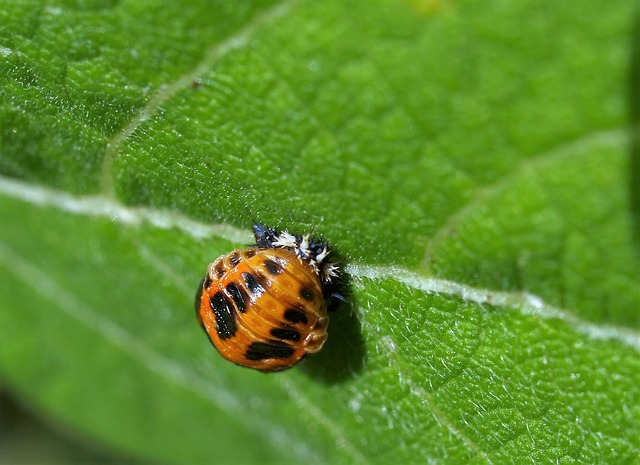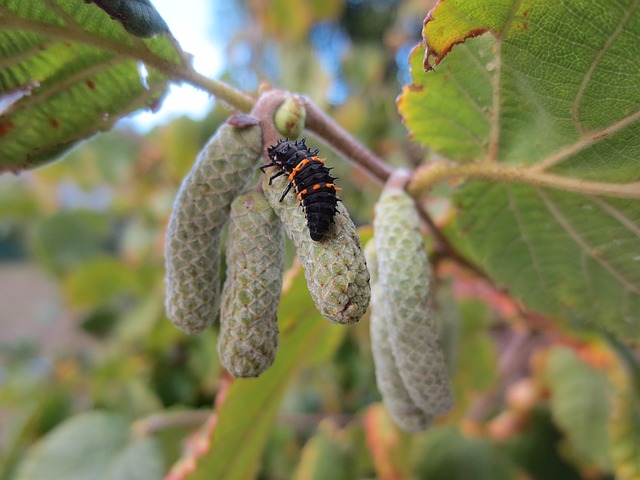We can expect an aphid infestation in the spring and throughout the year, and with it, the arrival of the seven-spotted sunflower. And once again, questions will start popping up all over the place about what this pest is and what it is doing to the leaves, fruit, and twigs. If you try to pull it off, it will leave a stain. No, it is not a pest. It looks scary, but it doesn\’t destroy the fruit. It\’s just that the larval stage of the insect has decided to perch on the fruit and complete its transformation from larva to beetle there.

If you encounter such a trapped creature, do not dispose of it. The sagebrush is a predator and helps to keep the garden free of aphids. There is no such thing as an aphid-free garden. In fact, there are far more aphids than there are predators that kill them. Still, the aphids are a welcome addition to the greenhouse and to the infested plants.
They are predators not only in their adult stage, but also in their larval stage. They eat aphids, which are particularly troublesome. If you are lucky, you might see, for example, a small black line going toward a swarm of tiny green beetles. On the other hand, if you think ants are fighting aphids, you are mistaken. On the contrary, the ants are nurturing and growing the aphids.
Many gardeners also deliberately trap aphids and place them where they are needed. This is one biological option for crop protection. Of course, there are various sprays and old-fashioned advice. But these are chemicals that should not always be in the garden. After all, we want organic quality vegetables, fruits, and herbs. The only way to achieve this is to have these little sun-baked plants in the house. Alternatively, the plants could be washed in a stream of water, but this is not a permanent solution.
Therefore, if you see something strange and unfamiliar stuck in a plum seed, do not be afraid to get rid of it. Rather, look around, turn over the leaves, and examine the plant. Even if you think the aphids are avoiding your garden, you are bound to find where they are.